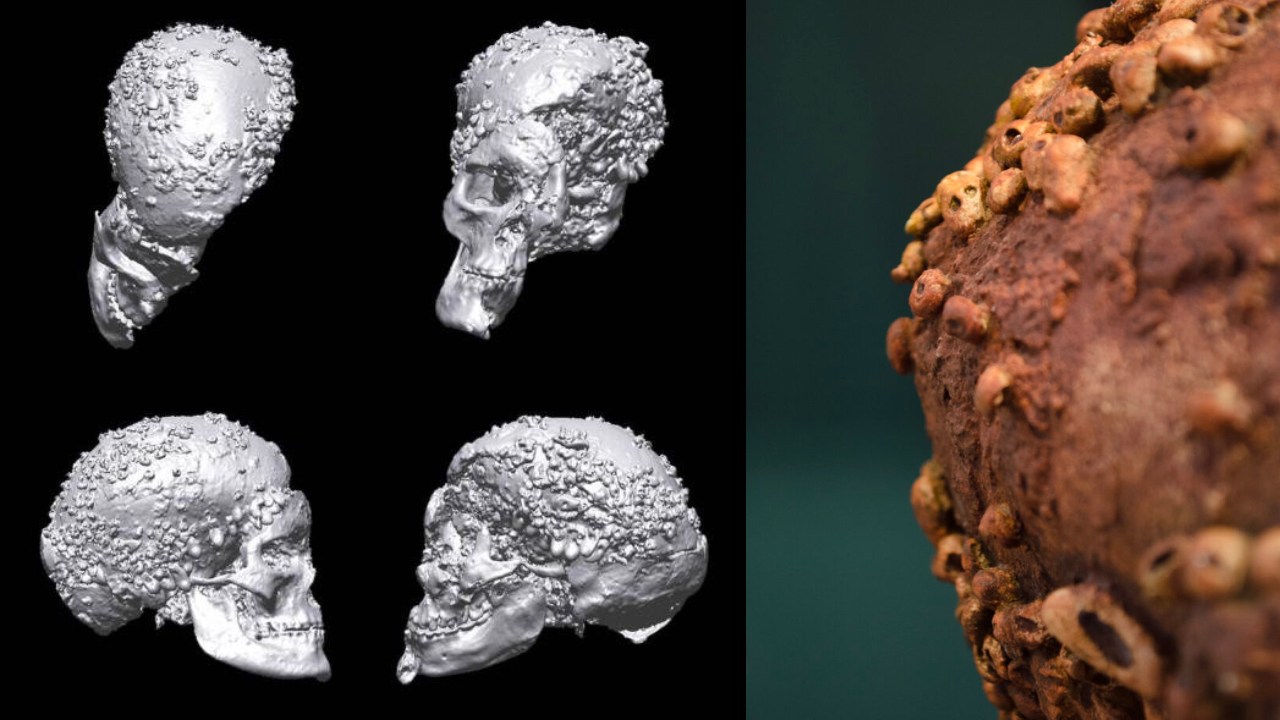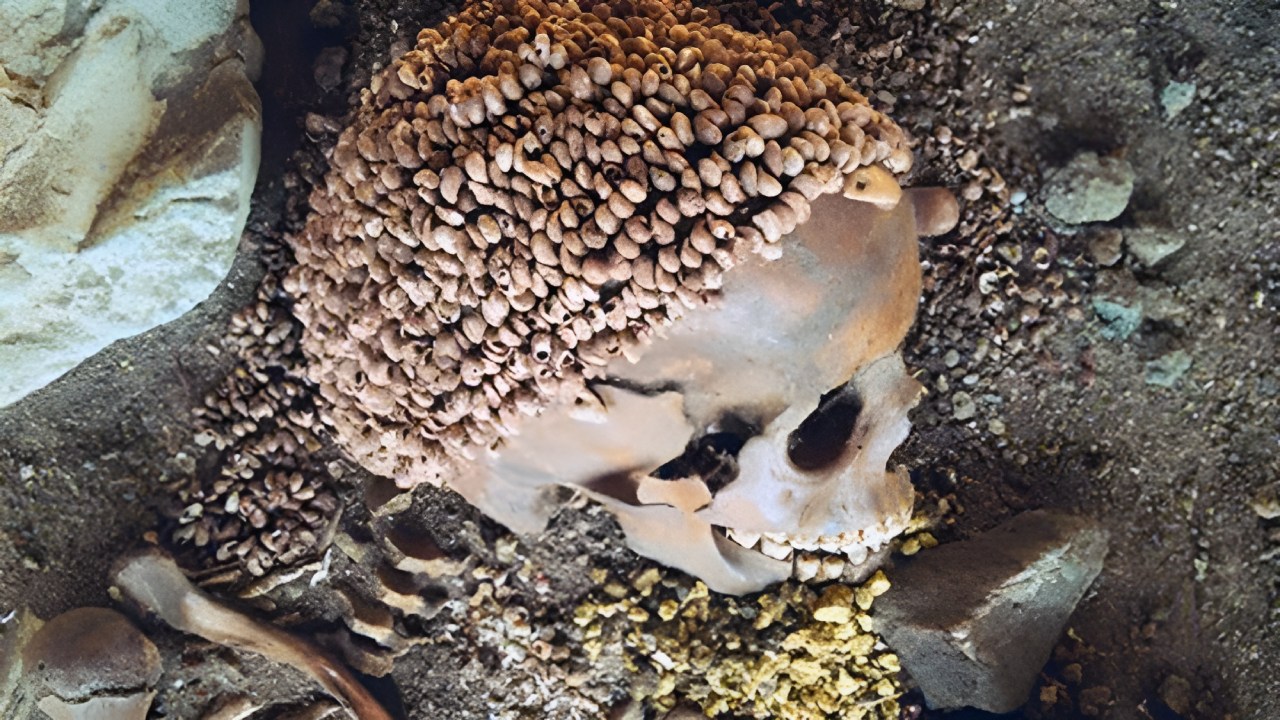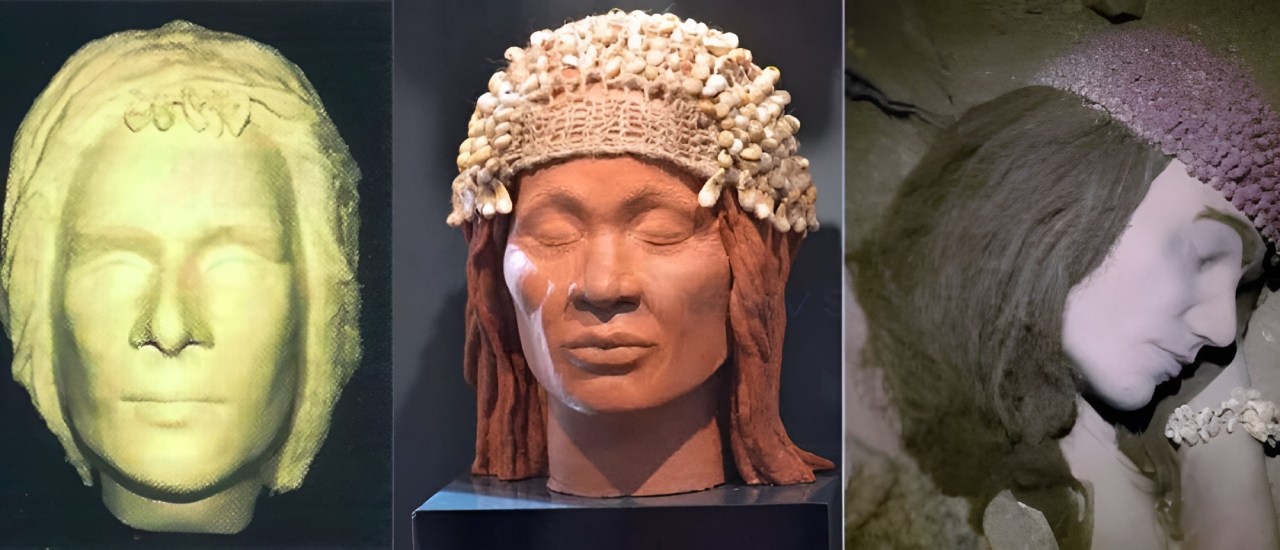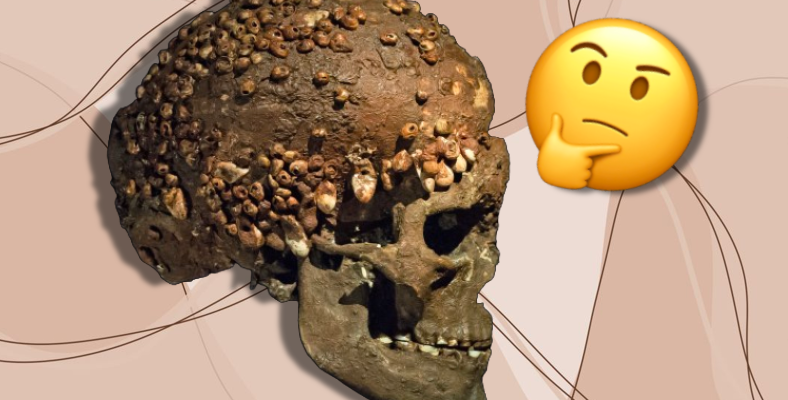Ancient times manage to attract attention to a great extent with their lifestyles and clothing styles, which are quite different from today’s traditions and with details that are sometimes hard to believe. An archaeologist came across an incredible skull during excavations and chose to follow the clues.
The skull sample he came across was of a type he had never seen before. This skull surrounded by unidentifiable objects and surprisingly, it managed to be preserved underground for thousands of years.
What about what an archaeologist unearthed during excavation? What exactly were the things on the skull?
A skull from the Old Stone Age found in Italy’s Caviglione Cave had extraordinary details.
This skeleton was unearthed by archaeologist Emile Riviere during excavations in 1872. At first it was thought to belong to a man. For this reason, the skeleton was nicknamed “Mentone Man”.
However, as a result of the archaeologist’s studies, it was determined that this body belonged to a woman and “Woman of Cavigliona” It became known as. As a result of DNA analysis, this tall woman was 37 years old when she died, she had probably given birth several times and was already pregnant.
The striking feature of the skull is with small seashells and red deer or dog teeth If it wasn’t covered. These seashells were intertwined and almost resembled a headdress.
So why was the Cavigliona Woman’s skull covered with seashells and animal teeth?

Actually, the answer to this question is quite controversial. Old Stone Age people believed in life after death and gave the deceased person It was customary to wear such a headdress before being placed in the grave.
Valuables and accessories were indicators of belonging to a certain class, and the people who wore them were, as it were, would prove their social superiority. According to another view, such a headdress was a sign of holiness, not power.
Thus, an idea emerged that mothers wore this accessory made of seashells and animal teeth.

Apart from the Woman of Cavigliona, there were three other people, two of whom were women, who lived in that period and wore a similar headdress. The first of these was the Prince of Arene Candide, a 15-year-old boy. Candide owed his nickname The Prince to the extraordinary equipment with which he was buried, and the skull a cap consisting of hundreds of perforated shells It was surrounded by.

Ostuni Woman Delia was a pregnant woman who lived approximately 27,000 years ago. Delia’s head, with a cap painted in red ocher It was decorated and covered with various shells and deer teeth.
Finally, the Paglicci Woman, whose body was unearthed in 1989 as a result of excavations, was buried with a headdress similar to the other women she lived with in the same period. Seven-hole deer teeth on the front of a dark yellow cap There was.
Our other content about ancient times:
RELATED NEWS
Meet the Oldest Extant Wooden Structure in the World: In the Ancient City of Gordion!
RELATED NEWS
What Are the Shapes That Look Like UFOs, Helicopters, and Lightbulbs on Ancient Egyptian Reliefs Actually?
RELATED NEWS
Why Are Most Ancient Sculptures White Instead of Colored?
RELATED NEWS
Interesting Ancient Creatures Uncovered from the Frozen Grounds in Siberia
RELATED NEWS
